Arausio (Orange)
Q187796Arausio: Roman city in central France, modern Orange.
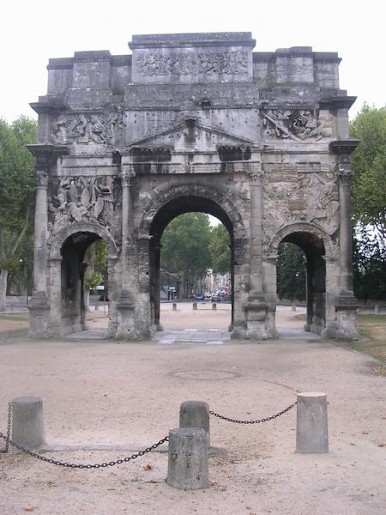
Arausio, named after a native goddess, was probably the site of Hannibal's crossing of the Rhône (218 BCE) and certainly the place where the Cimbrians defeated the Romans in 105 BCE. The Roman town was founded as a settlement for veterans of the Second Legion in 36 BCE.; it replaced an older town, which was situated on a hill, a bit more to the south.
The town suffered heavily from the Gallic revolt under Julius Sacrovir and Julius Florus in 21 CE, but as it was situated along the road from the Mediterranean to Lyon, there was sufficient trade to obtain money for recovery.
To commemorate the Roman victory, a triumphal arch, was erected. Reliefs show defeated Gauls and victorious legionaries, which may have belonged to the Twentieth Legion Valeria Victrix, the Fourteenth Legion Gemina, and the Twenty-First Legion Rapax. This is one of the oldest surviving examples of the "triple" triumphal arch that was to become the standard type (e.g., the arch of Septimius Severus and the arch of Constantine I the Great in Rome).
The theater was rebuilt. The impressive stage wall has a width of 103 meters and is 38 meters high. The statue in the center represents the emperor Augustus, under whose auspices Orange had been founded.
An interesting archaeological find dates from the reign of the emperor Vespasian: a land register. It must have measured 44 x 63 square fields, each measuring 715 x 715 meters. Some of these fields were given to veterans and were free of taxes; others were property of the city and were liable to taxation.
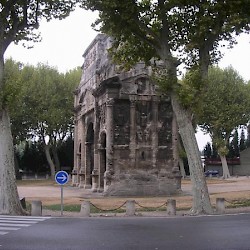 Orange, Arch from the east |
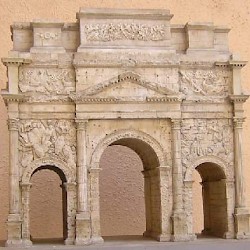 Orange, Arch, model |
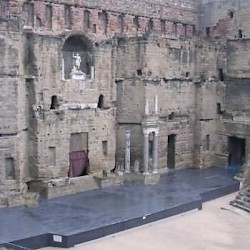 Orange, Theater, stage |
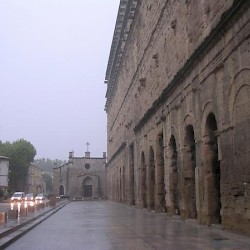 Orange, Theater, outside |
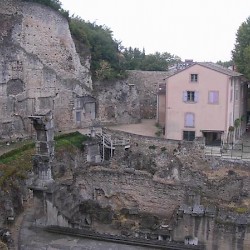 Orange, Temple near the theater |
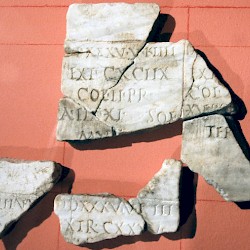 Orange, Cadastre |
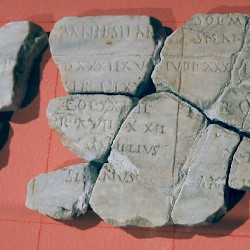 Orange, Cadastre |
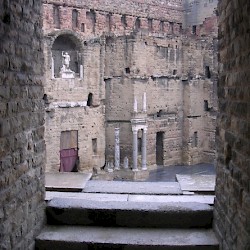 Orange, Theater, general |